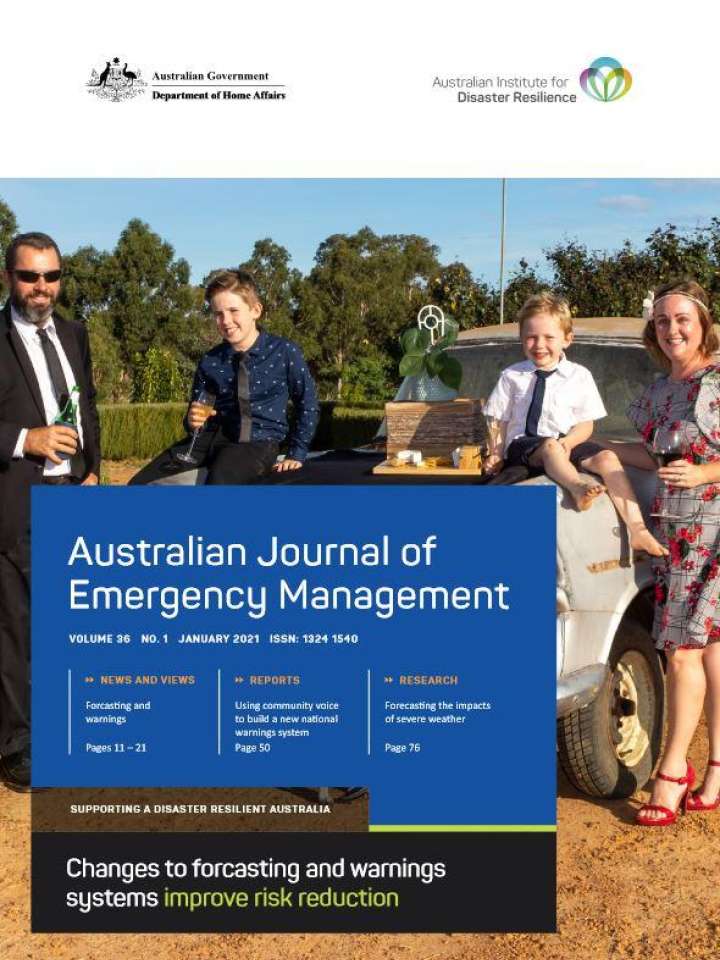Australian Journal of Emergency Management (Vol. 36, No. 1, January 2021)
The Australian journey regarding warnings has been a long one, and while the concept of a national warning system had been under consideration for some time, momentum really started to gain pace following the development, testing and analysis of the Community Information and Warning System in Victoria in 2004. While the systems, processes and technology used for the trial were ahead of their time, Australia has not sat on its laurels. Since then, Australia has developed and implemented a national warning system, Emergency Alert, which has progressed in leaps and bounds.
Having a technologically advanced warning system is one thing, however, its capacity to provide enhanced community safety outcomes relies on more than just technology. Community awareness of risk is important to ensure that warnings are received in context and community education about the purpose, capacity and limitations of the system is important. It is crucial that a warning system be more than just a method of providing a call to action. It also needs to provide timely and accurate information to assist in community decision-making as, after all, we are increasingly expecting communities to share responsibility for their safety outcomes.
This issue explores early warning systems, including:
- Australia's Black Summer heatwave impacts;
- New technology boosting early warning capability in New Zealand;
- Why some people don't respond to warnings: writing effective short warning messages;
- Shiting the paradigm: emergency management to disaster risk management in Tonga.
Explore further
